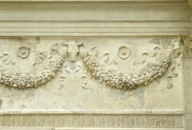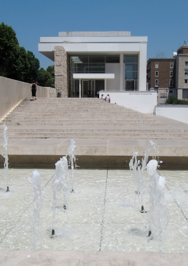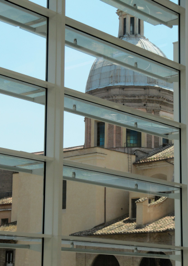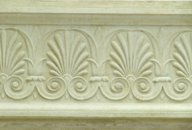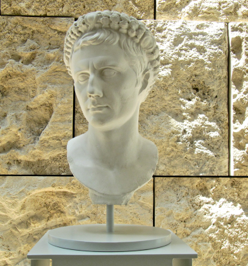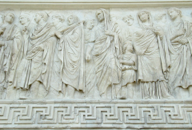ara pacis augustae
ROME, italy
europe
june 6, 2010


ara pacis augustae
ROME, italy
europe
june 6, 2010




The Ara Pacis ( pronounced Ara Pa chees) is a monument to peace honoring the Roman emperor Augustus’ triumphant return in 13 BC from victories in Hispania and Gaul, the western provinces of the Roman Empire. It originally stood on an open plain where Augustus had developed a complex of monuments. The Ara Pacis stood on a flood plain of the River Tiber, where it became buried in four meters/13 feet of silt over the centuries. Fragmentary sculptures of the altar were first discovered in 1568 beneath the basilica San Lorenzo in Lucina with further discoveries of fragments beneath the Teatro Olimpia in 1869. Excavations proceeded beginning in 1903, after it was discovered that these fragments belonged to the Ara Pacis, and continued until it was feared that the foundations of the theater might be compromised. In 1937, the Italian Cabinet decreed that excavations should recommence in order to honor the 2,000th anniversary of Augustus’ birth. The most advanced technology was used to excavate the altar from beneath the Nuovo Teatro Olimpia where 70 cubic meters of ground was frozen to complete the task. The dictator, Benito Mussolini, built a protective building for the altar in 1938, moving it to a new location with the intention of building a Roman “theme park” to glorify Fascist Italy. In a fast-forward to a bright, sunny day in Rome on June 6, 2010, Henry and I were strolling around the familiar turf of the Palazzo Borghese. Near the Tiber River, we happened onto the splendid architecture of Richard Meier, who had been commissioned to design a museum to house this important historic artifact. The pure minimalist style that bears Richard Meier’s trademark signature is in perfect proportion to the object it enshrines, making a visit to the museum an experience combining historical artifact and contemporary architecture. Elegant spaces textured with both polished and rusticated lime stone, and vistas of Rome revealed through plate glass walls, provided both context and contrast to the ancient carved marble altar. A scale model of the altar itself, plus an architectural model of the Campus Martius illustrating the original site of the altar, defined its scale and placement in relationship to other buildings that existed when it was commemorated in 9 BC. The elegance of the 1st century BC Ara Pacis, packaged in beautiful 21st century AD architecture, non-verbally depicted the passage of time and the evolution of culture, technology, and humanity. Well-placed museum placards further explained the significance of the venerated altar:
Text in the museum enshrining the Ara Pacis describes the purpose of this altar: “The Senate decreed the erection of the Ara Pacis in 13 BC to celebrate Augustus’ return from the western provinces as stated by the princeps himself in his Res gestae: ‘When I returned from Spain and Gaul after successful operations in those provences, the Senate voted the consecration of an altar to Pax Augustus in the Campus Martius in honor of my return, and on this altar, it ordered the magistrates and priests and Vestal virgins to make an annual sacrifice.’ (12.2). As the Altar’s dedications was celebrated on the 30th of January 9 BC, we can deduce that it took three years and a half to build the altar and to complete its complex decoration that was probably entrusted to Neo-Attic sculptors working in Rome in the first century BC.”
PHOTOS: Left Column: 1. The Ara Pacis Museum along the Tiber River, designed by Richard Meir, an internationally known New York City architect. 2, 3 & 4. Carved Marble details of the altar. Center, Top: Detail, architectural model of the Campus Martius. The arrow points to the placement of the altar within the campus. Center, Middle: Sculpted portraits of Roman figures on contemporary pedestals. Center, Bottom: Portrait bust of the Roman emperor, Augustus. Right Column: 1. View of the Ara Pacis in situ. 2. Museum model of the Ara Pacis. 3. View of the dome of the neighboring church, as seen through the glass walls of the 21st century architecture. 4 & 5. Carved marble details of the Ara Pacis.

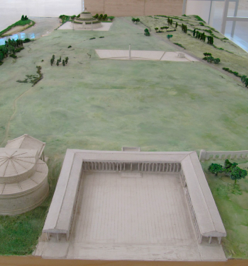
Altar of Augustan Peace
